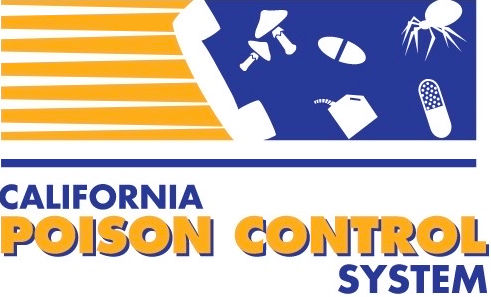By Stephen Thornton, MD
Introduction
The use of synthetic cathinones has risen dramatically in the last several years. These drugs are analogs of the naturally occurring stimulant cathinone which is found in Khat (Catha edulis). Synthetic cathinones are skillfully marketed as “legal highs” over the internet and in smoke and convenience shops where they are often sold as “plant food” or “bath salts” and frequently labeled as “Not For Human Consumption.” When consumed, their clinical effects are very similar to the amphetamines to which they are structurally related. Sympathomimetic excess with substantial agitation and psychosis are frequently described. There is no specific antidote and treatment is focused on good supportive care with aggressive use of chemical sedation for behavioral control.
Case presentation
An emergency physician calls the Poison Control Center because he has a severely agitated patient who ingested an unknown substance which friends are calling a “bath salt.” The patient is very tachycardic, hypertensive, and diaphoretic. The treating physician is calling asking for identification of the intoxicating substance and recommendations for treatment and disposition of this patient.
Questions
- What are “bath salts”?
- What toxicity is associated with synthetic cathinones use?
- What role does laboratory evaluation play in the workup of these patients?
- How do you treat synthetic cathinone toxicity?
Epidemiology
The synthetic cathinones are structural analogs of the naturally occurring chemical, cathinone. Cathinone is found in the east African shrub Catha edulis (Khat) which is widely chewed for its stimulant effect in that part of the world and others. Synthetic cathinones were first developed in the early to mid 20th century and used initially to treat conditions such as obesity and fatigue. Currently, the synthetic cathinone, bupropion (Wellbutrin®), is used for smoking cessation and to treat depression. In the mid-2000’s various synthetic cathinones began to be marketed in Europe as alternative or “legal” highs and in 2010 they were first identified in the United States. They are widely available over the internet and in convenience and smoke shops where they are sold as “bath salts,” “plant food,” “skin treatments,” or even “stain removers.” These products are typically ingested or insufflated though intravenous usage has been described. Multiple synthetic cathinones have been identified in these products. Mephedrone (4-methylmethcathinone), MDPV (methylenedioxypyrovalerone), methylone (3,4-methylenedioxy-N-methylcathinone), and ephedrone (methcathinone) are common examples but it is important to note that the exact composition of these products is dynamic and previously undescribed synthetic cathinones continue to be isolated from current products. It is possible that there are well over a dozen chemically distinct synthetic cathinones now available. Along with containing one or more synthetic cathinones these products may contain other agents, such as caffeine, lidocaine, or anti-histamines. Clinicians should not rely on packaging or labeling for identification of contents. Manganese has even been reported to contaminate some batches of synthetic cathinones resulting in parkinsonian movement disorders in users. Interestingly, almost all synthetic cathinones products sold will carry a “Not For Human Consumption” label. This is an attempt to circumvent the Federal Analog Act which would otherwise allow the Drug Enforcement Agency (DEA) to treat synthetic cathinones as controlled substances like cathinone which is currently a DEA schedule I substance. As it currently stands, four synthetic cathinones (mephedrone, MDPV, methylone, and ephedrone) are DEA schedule I. It is likely with these agents being made controlled substances that producers of these products will begin to substitute them with other synthetic cathinones such as flephedrone (4-fluoromethcathinone) or ethcathinone (2-ethylamino-1-phenyl-propan-1-one)
Pathophysiology and clinical effects
The synthetic cathinones are examples of phenylethylamines, a class of chemicals to which more familiar agents such as amphetamine, methamphetamine, and MDMA (3,4-methylenedioxy-methamphetamine) also belong. Like the amphetamines, the synthetic cathinones act as indirect sympathomimetic agents. They do not directly simulate sympathetic receptors but rather they primarily enhance the release and, to a lesser degree, inhibit the reuptake and breakdown of monamine neurotransmitters such as norepinephrine, dopamine, and serotonin. An excess of these monamines leads to the sympathomimetic toxidrome described with synthetic cathinone exposures. Similar to the amphetamines, the synthetic cathinones can cause tachycardia, hypertension, diaphoresis, mydriasis, hyperthermia, agitation, psychosis, and seizures. Occasional these symptoms are severe or prolonged, especially the agitation and psychosis. Rare cases of death have been attributed to the use of synthetic cathinones. At this point, it is not possible to comment on what chronic effects long-term use of synthetic cathinones may have. It is likely their chronic toxicity will mirror that of amphetamines but scientific evidence is not currently available. Also of note is the fact that several synthetic cathinones (MDPV and methylone) share very close structural similarity to MDMA. This raises the yet unconfirmed possibility that they too could also cause hyperthermia and hyponatremia seen with MDMA.
Diagnostics
Laboratory tests play a limited role in the evaluation and treatment of a patient under the influence of synthetic cathinones. With the significant agitation that can accompany synthetic cathinone use, checking total creatinine kinase is warranted to rule out potential rhabdomyolysis. Evaluation of serum electrolyte concentrations and renal function is also reasonable. The typically available urine drug screen will not detect a vast majority of synthetic cathinones and adds little if any useful clinical information. Bupropion is known to occasionally trigger false-positive amphetamine results with these immunoassay tests but to date no other synthetic cathinones have been reported to cause false-positives. The greatest value of laboratory tests in the work-up of the potentially synthetic cathinone toxic patient is to rule out other medical causes such as meningitis, encephalitis, or thyrotoxicosis. Likewise, radiographic tests generally have no value in these patients except to rule out other cause of altered mental status such as intracranial hemorrhage. Electrocardiograms may be useful especially if the patient is profoundly tachycardic to rule out supraventricular tachycardia and other dysrhythmias.
Treatment
Treatment for patient’s intoxicated from synthetic cathinones is centered on excellent supportive care. Hydration with intravenous fluids should be initiated along with measures to actively cool patients if they are hyperthermic. It is critical to control these patients’ agitation as rhabdomyolysis and cardiovascular collapse from excitatory delirium can occur. While stimuli reduction may be of benefit, benzodiazepines, such as lorazepam or diazepam, should be the first line agents in trying to sedate these patients. Seizures should also be managed with benzodiazepines. Aggressive and repeat dosing may be required. While benzodiazepines are preferred, anti-psychotics such as haloperidol may also be beneficial and may be used in conjunction with benzodiazepines. Physical restraints may be needed to prevent these patients from hurting themselves or others but steps should be taken to always chemically sedate any patient who needs physical restraints. While treating these patients it is important to keep in mind that severely agitated patients are at risk for sudden death and behavioral control should be achieved rapidly. Several other conditions can mimic the sympathomimetic excess seen with synthetic cathinones toxicity. Antimuscarinic toxidrome, sedative-hypnotic withdrawal states, neuroleptic malignant syndrome, serotonin syndrome, infectious etiologies (i.e. meningitis), endocrine abnormalities (i.e. thyroid storm), and intracranial hemorrhage could all present similarly and should be considered and ruled out as warranted.
Disposition
The decision on whether to admit or discharge these patients will depend on their degree of toxicity, evidence of end-organ damage (i.e. rhabdomyolysis), and response to therapy. Mildly intoxicated patients who normalize their vital signs and mental status and remain stable over a 4-6 hour observation period can likely be discharged. However, patients who present in extremis, remain agitated with abnormal vital signs, require large amounts of chemical sedation, or show signs of end-organ damage will need to be admitted to the hospital for monitoring and treatment. It should be noted that in early studies looking at toxicity from synthetic cathinones a high percentage of patients required admission. All patients who present with synthetic cathinone toxicity should, at some point, be advised on the risk of substance abuse and given treatment resources.
Answers to questions
- What are “bath salts”?
“Bath salts” is a common name for various synthetic cathinones which are amphetamine-like substances. Occasionally other substances such as caffeine may be present in these products. - What toxicity is associated with synthetic cathinones use?
The synthetic cathinones cause sympathomimetic excess characterized by tachycardia, hypertension, hyperthermia, mydriasis, diaphoresis, agitation, psychosis, and seizures. Deaths have been reported. Their clinical presentation is very similar to that of the amphetamines. - What role does laboratory evaluation play in the workup of these patients?
Laboratory evaluation plays a limited role in working up these patients. Checking a total CK to evaluate for is reasonable as is evaluation of serum electrolytes and renal function. Current commercially available urine drug screens do not detect synthetic cathinones and are of limited value in these patients. Laboratory evaluation may be more useful in ruling out other disease process rather than confirming synthetic cathinone toxicity. - How do you treat synthetic cathinone toxicity?
Treatment of synthetic cathinones toxicity is based on supportive care. Care should be paid to appropriately sedating, hydrating, and cooling these patients. Controlling agitation is critical and benzodiazepines with or without are the treatment of choice.



